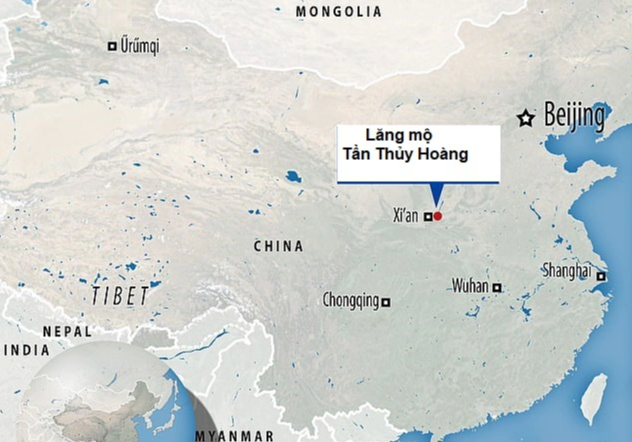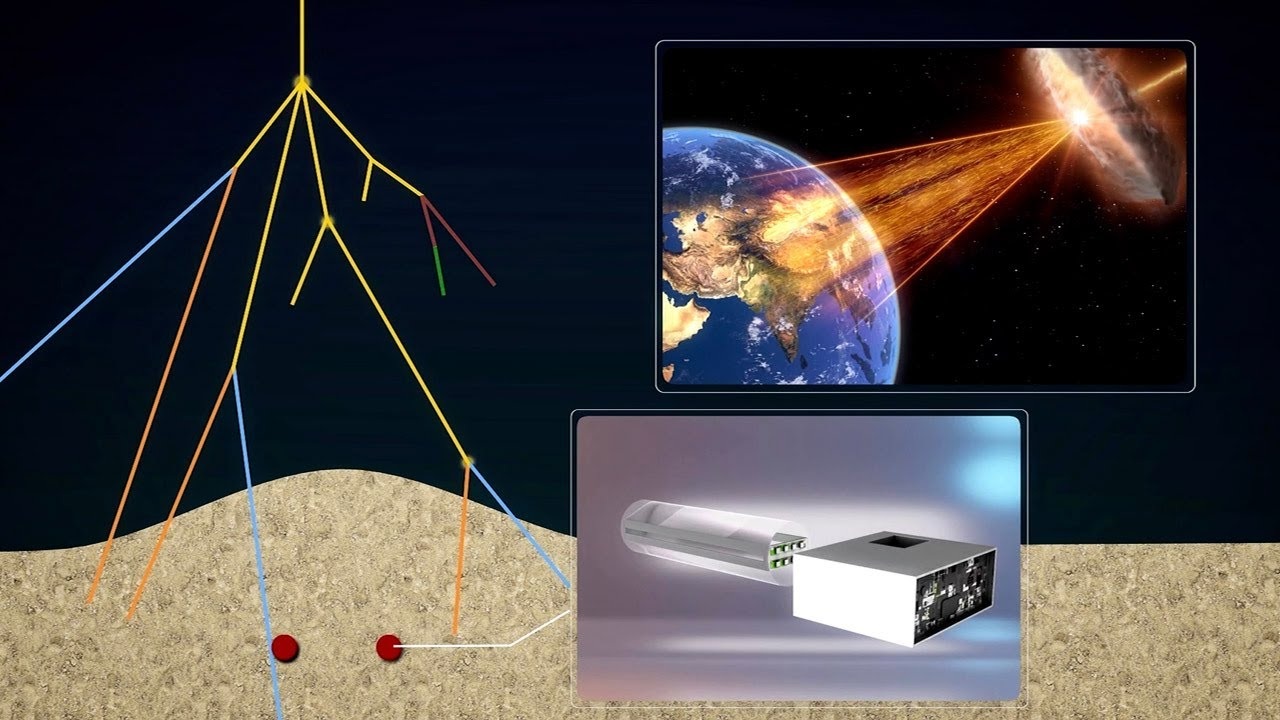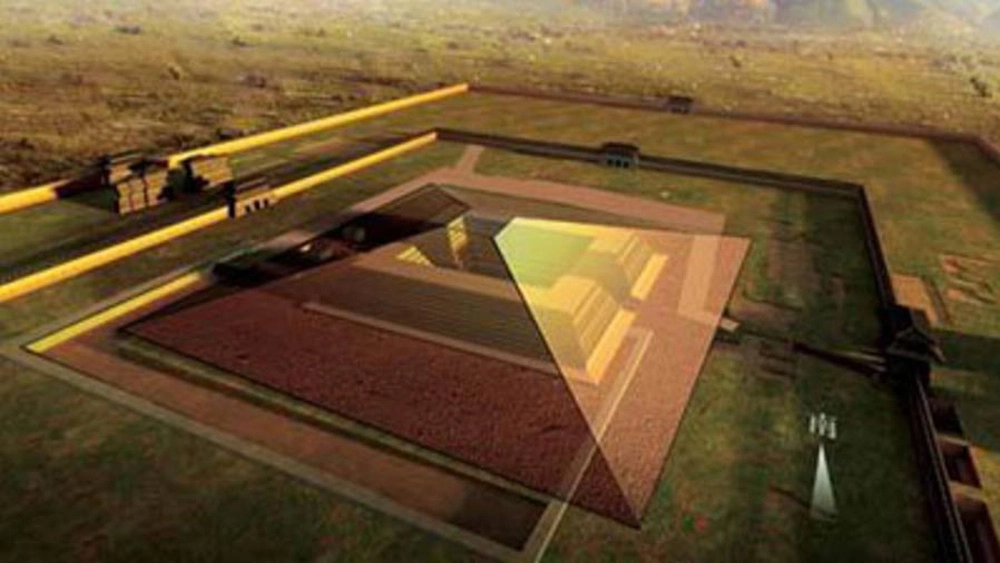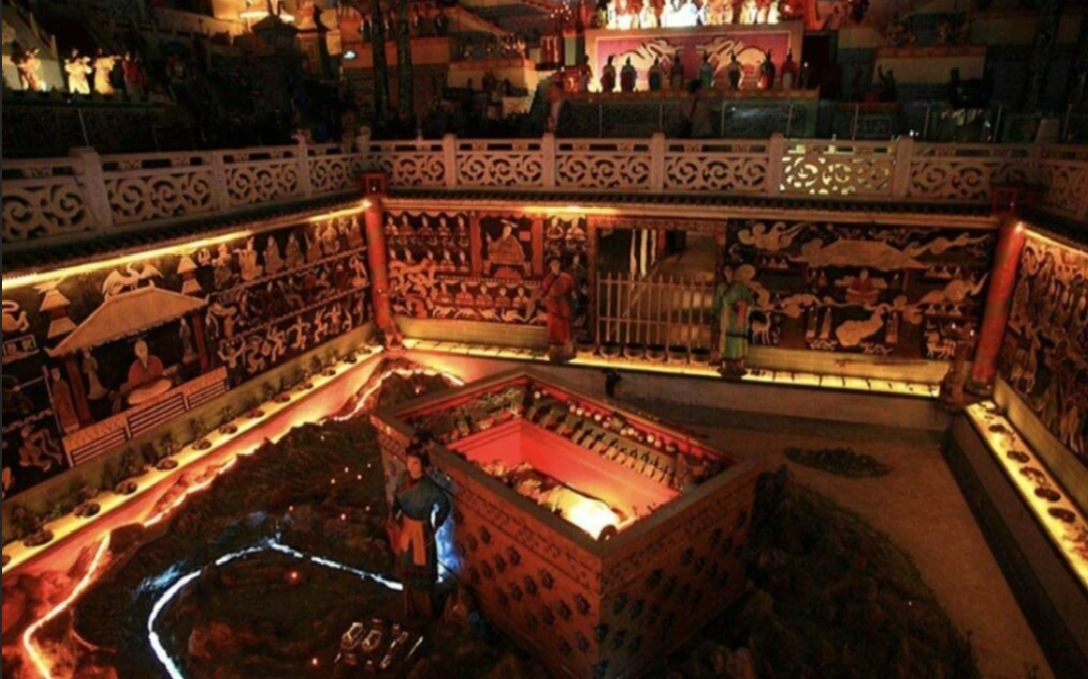Over the course of more than 2,000 years, the tomb of Qin Shi Huang still contains many secrets that posterity may take hundreds of years to unearth and decipher.
Qin Shi Huang was the founding emperor of the Qin Dynasty, the first unified dynasty in Chinese history. In order to prepare in advance for life on the other side of the world, the Qin Emperor began to build his tomb in 246 BC. After 38 years of construction with more than 700,000 skilled workers and craftsmen, this mausoleum has just been completed. In fact, the tomb was built as early as Qin Shi Huang was only 13 years old, but was promoted after he was crowned emperor and the work was only completed after Qin Emperor’s death.
The tomb of Qin Shi Huang was discovered in Xi’an City, Shaanxi Province, China in 1974 after a group of farmers here dug up the first terracotta warrior of the same size as a real person.
Recent surveys show that Qin Shi Huang’s underground tomb is 260m long from east to west and 160m wide from north to south. The total area is 41, 600 m2, it is the largest tomb in the Qin and Han dynasties, its size is equivalent to 5 international football fields.
The central mausoleum area is said to resemble a palace and is home to the remains of the Qin emperor and many treasures. This place occupies 2/3 of the total area, the tomb also has a burial place for the princes of Qin Emperor with 48 small tombs found. In addition, archaeologists discovered 98 rooms right next to the area of the terracotta army.

For more than 2,200 years, the tomb of Qin Shi Huang has remained almost “impregnable”. The largest discovery of this tomb was the army of more than 2,000 terracotta warriors along with chariots and crossbow bows. Four burial pits have been excavated with a total area of more than 25,000m2. However, that is only the outer part of the mausoleum. Archaeologists predict as many as 8,000 terracotta statues inside the eternal resting place of the Qin emperor.
Đến cuối thế kỷ XX, cộng đồng khảo cổ quốc tế đều ủng hộ việc ngừng khai quật sâu vào lăng mộ. Do vậy, kết cấu của phần lăng mộ trung tâm vẫn nguyên vẹn. Các chuyên gia đã đưa ra 3 nguyên nhân chính khiến Trung Quốc đến nay vẫn quyết định chưa khai quật công trình đồ sộ này.
NHỮNG CẠM BẪY NGHÌN NĂM

According to the records of the historian Sima Qian who lived in the Han dynasty written in the II century BC, inside the tomb of Qin Shi Huang there existed “hundreds of rivers modeled after mercury.”
In the 1980s, using magnetic resonance scanning (MRI) technology, Chinese and German researchers found that, the soil in the burial hill above the tomb had a much higher concentration of mercury than elsewhere. They estimate that the concentration of mercury in the tomb is 280 times higher than normal. The amount of mercury inside can be up to 100 tons. This quite coincides with the records in sima Qian’s chronicle of the mysterious mercury river in the tomb of Qin Emperor.
Currently, some archaeologists working in this area believe that Qin Emperor’s body may have been among the rivers of poisonous mercury. Legend has it that Qin Shi Huang swallowed mercury in the belief that it could bring immortality, but was poisoned by drinking too much leading to death. After his death, mercury rivers were again created inside the tomb to preserve Qin Emperor’s body.
On the other hand, there are opinions that the ancients used the toxicity of mercury in tombs to deter grave thieves. Mercury is a volatile metal that is easily separated into small droplets and widely dispersed, especially the evaporation rate of mercury will increase rapidly as the temperature and wind speed increase. One question is, how would excavating a place that might be filled with mercury like Qin Shi Huang’s mausoleum impact the environment and the health of the surrounding population.
Many people believe the mercury river is the reason why Qin Shi Huang’s tomb is impregnable, but that seems to be just one of the many pitfalls that make the tomb “invulnerable”.
According to the “Chronicle”, in order to protect the emperor’s tomb, the Qin dynasty workers are said to have built a series of traps inside including crossbow bows, automatic arrow-firing machines… What was the specific arrangement of crossbow traps in Qin Shi Huang’s tomb, to this day there is no way to determine. However, through excavation of the horse tunnel (the terracotta army outside Qin Shi Huang’s tomb), archaeologists discovered crossbows made from strawberry wood material. This weapon is a “crossbow” (super crossbow), possessing very strong features and damage. According to scholars’ estimates, the crossbow type in the tomb of Qin Shi Huang has a range of more than 800m, a tension of more than 350kg and automatic operation.
In addition, when studying, archaeologists found that there was a cliff about 7m deep built inside the tomb and there was a lot of quicksand on the cliff. Grave thieves when breaking in can be drowned by quicksand.
It is not excluded that these pitfalls still work well after more than 2, 000 years. That is why the excavation of Qin Shi Huang’s tomb at this time can be potentially risky.
LIMITATIONS OF SCIENCE

According to the calculations and estimates of archaeologists, based on the current level of human science and technology, to excavate such a large-scale construction as the tomb of Qin Shi Huang, posterity will take hundreds of years. This period is also only an estimate because during excavations does not exclude the possibility of arising unforeseen situations, which make the excavation process even longer and more complicated.
Archaeologists also warn that, even with successful excavations, China is unlikely to ensure the artifacts inside the tomb are intact when taken off the ground.
The most obvious proof is the terracotta army in Qin Shi Huang’s tomb.
Warrior-shaped terracotta statues were originally draped in purple painted armor and war cells, but after a while were excavated and removed from the ground, they turned completely brown because they were oxidized when exposed to outside air. The current technique of preserving archaeological cultural artifacts has not been able to handle this problem well.
“Currently, our archaeological work is focusing on the basic layout of the tomb,” said Qingbo Duan of Northwestern University in Xi’an, China, who led the tomb excavations from 1998 to 2008. Because if water or air enters that can damage any artifact inside, even the introduction of robots is excluded.
Yinglan Zhang, an archaeologist at the Shaanxi Historical Museum in Xi’an (China) warns that if the tomb is tried to be opened, including by using robots or drills, the balance will be broken and the objects inside will be destroyed quickly.
In order to preserve the structure of the tomb as well as the artifacts inside, instead of digging, Chinese scientists are considering the option of using a cosmic ray detector. According to a study funded by the Chinese government, cosmic rays are likely to help archaeologists pinpoint where the remains and treasures of the Qin emperor were located.
Archaeologists may need at least two cosmic ray detectors placed in different locations about 100m below the grave surface. These devices can detect atomic particles of cosmic origin through the ground, thereby allowing scientists to identify hidden structures that are not visible.
FENG SHUI FACTOR

From time immemorial, it was often very invested in choosing the location for the construction of tombs. According to feng shui, the prime location must be mountainous and surrounded by rivers. When building the tomb of Qin Shi Huang, choosing the location alone squeezed out the strength of many feng shui masters at that time.
The tomb is located under a mound 76 meters high shaped almost like a pyramid. Although he was far from the city of Ham Yang at that time, Qin Shi Huang still decided to choose and invest a lot of money, effort and time to build a tomb here. From a feng shui perspective, some researchers believe that the tomb of Qin Shi Huang is a model, the treasure of geography is considered ideal. The principle of leaning back on the mountain, which has water around it, was the premise for the construction of the tomb of this Chinese emperor. The feng shui feature of Qin Shi Huang’s tomb is that the south is based on mountains, the 3 sides north, east, and west are all surrounded by water.
When observing satellite images, experts noticed that the Lyshan Mountains, where the tomb of Qin Shi Huang is located, are likened to a giant dragon. According to feng shui, the mountain range that extends without breaking is the “long circuit”. Different shapes and positions of long circuits will represent different meanings but all bring positive and fortunate things. In particular, the central area, where Qin Shi Huang’s tomb is located right in the “dragon’s eye” position, is considered very sacred. Therefore, the experts did not want to break this miraculous composition, so they abandoned the idea of digging up the tomb of the Qin emperor.
In addition to the above factors, the risk of impact on the environment and the cost of excavation is also a major problem, causing secret exploration in the tomb of Qin Shi Huang to be limited. According to data from China’s Ministry of Culture, the 76m thickness of the soil covering the mausoleum makes it possible for later excavation costs to reach 60 billion yuan (nearly $9 billion).
Minh Phuong
According to Chemistryworld, Quora, LiveScience
